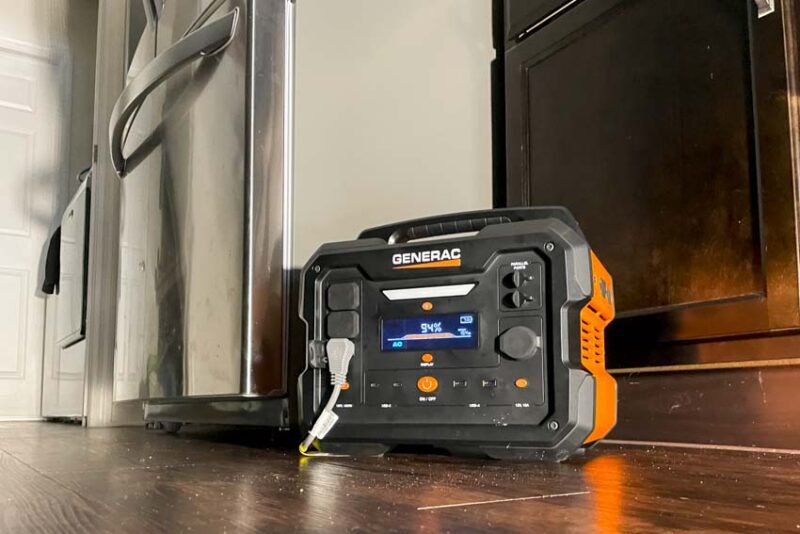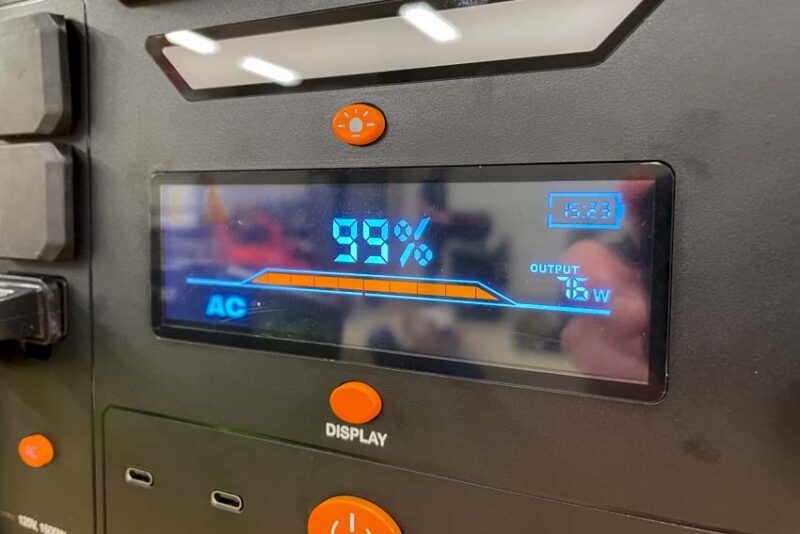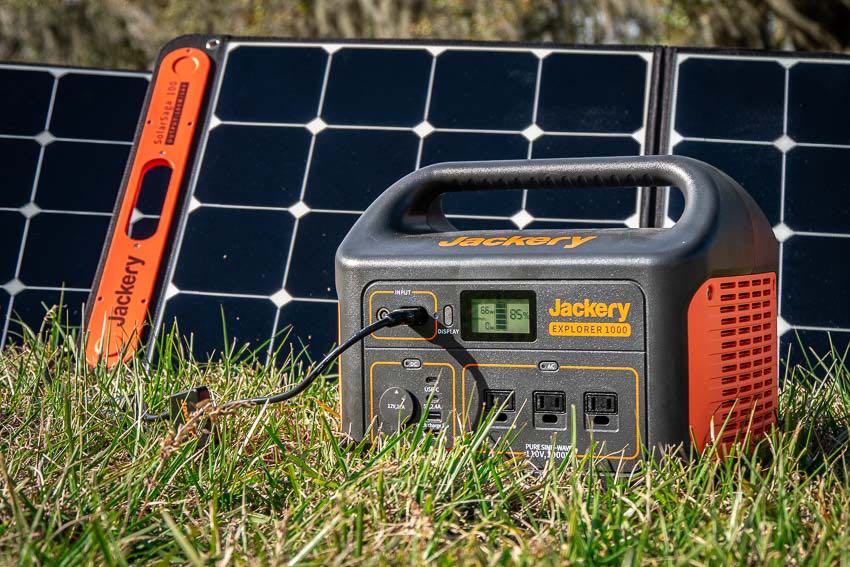Solar generators (or more correctly, portable power stations) are big business. Many generator retailers carry them, some gas generator manufacturers offer them, and Amazon is littered with options. With the promise of gas-free operation and solar recharging, they sound like a great way to have power on hand if a storm knocks out the grid.
Are they the perfect alternative to gas generators?
I live in central Florida and have taken half a dozen direct hits from hurricanes, along with more glancing blows than I can count. I’ve used solar generators/portable power supplies in the aftermath, and I’ll help you decide whether they’re a good investment as part of your storm prep gear.
Power Output

The first thing you need to consider is how much power a solar generator can produce. There’s a wide range, and some of the most popular are 1000-series, such as the Jackery Explorer Plus 1000 or the Generac GB1000.
Most of these are capable of producing 1500 – 1800 continuous watts and 1800 – 3600 surge watts.
Knowing that gives us an idea of what we’re able to run. Below are some examples of a handful of common items people prioritize when the power goes out. Note that these are general wattages, and your specific model may be higher or lower.
- Window AC unit: 1000 running, 1500 starting watts
- Full-size refrigerator: 700 running, 2200 starting watts
- 50-inch TV: 100 running watts
- Box fan: 75 running watts
- Phone fast charger: 45 running watts
- Internet modem and wifi router: 10 running watts
- CPAP machine: 5 running watts
The good news is that most 1000-series solar generators can run any of these devices. If you want to run more than one of them, add up the watts and see if your power supply can handle it.
Improve your experience: Larger solar generators can have higher power output… for a price.
You might enjoy: Best Inverter Generators
Capacity

The “1000” in 1000-series solar generators typically refers to the capacity. More specifically, they usually have 1096 watt-hours of stored power or something close to it. That number means you could run 1096 watts for one hour before the battery completely drains.
To see how long you can run a device, divide its running watts into the watt-hour capacity of the power supply you’re considering, and it will tell you how many hours you can run.
Let’s take another look at our list and see what kind of runtimes we can expect during an outage with a 1096Wh power supply.
- Window AC unit: 1.1 hours
- Full-size refrigerator: 1.6 hours
- 50-inch TV: 11 hours
- Box fan: 14.6 hours
- Phone fast charger: 24.5 hours (79 recharges of an iPhone 16)
- Internet modem and wifi router: 109.6 hours
- CPAP machine: 219.2 hours
If you’re in a situation where you might be without power for 5 – 7 days, you’re not going to be able to run some of those devices very long. On the other hand, you can run several days if you stick to low-draw items.
Improve your experience: Grab a high-capacity solar generator or supplementary power storage banks to extend your runtime.
Solar Recharging

Of course, when you recharge your solar generator, you’re back in business. So how long does that take?
A common solar panel package has 200 watts worth of panels. In an ideal situation, you could return 200Wh of energy to the battery every hour. That would take a little over 5 hours for a full recharge using our 1096Wh example.
The problem is that you never get maximum recharging. Even in Florida, we tend to peak around 80% of the rated watts. That changes as the sun travels across the sky and any cloud cover drops it even further. An average of 60% over of the course of the day is a reasonable expectation, and that’s with turning the panels to face the sun as directly as possible.
That makes the recharge time a little over 9 hours. And it assumes you don’t need to use any of that power while you’re charging. For many people, the runtime-to-recharge ratio isn’t worth the price.
Improve your experience: Expand the watts of solar panels you have to improve your charging times.
Consider picking up one of these solar generators!
Should You Buy a Solar Generator for Storm Prep?
If you’re planning to deal with multi-day power outages, a solar generator is not a good option as your primary power supply. While they can run almost anything on a standard 110V outlet, their ability to provide more than a few hundred watts for an extended period of time is limited.
Plus, solar recharging with portable panels can take all day if you draw it completely down.
It’s not all negative, though. I keep two portable power stations on hand and use them during power outages. I also have a gas generator.
The trick is to keep the solar generator in its wheelhouse and use it as a secondary power source. Running low-draw items that need “clean” pure sine wave power is where these units shine.
I run my wifi setup, charge phones, charge my laptop, run a couple of LED lights, and that’s it. With that configuration, I can get several days’ worth of power. By adding in a few hours of peak solar charging when the sun is directly overhead, it extends even further.
For appliances, larger fans, recharging power tool batteries, and everything else, rely on a gas generator.
However, nothing beats the comfort and convenience of a whole-home generator or high-capacity battery power bank. If you have the budget for a whole-home solution, there’s no question it’s the way to go.



